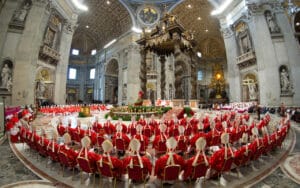Gregory of Nazianzus 4th C. Archbishop
Saint Gregory of Nazianzus was born in about 329 and died on January 25, 390. He served as the Archbishop of Constantinople from 380 to 381. He was a trend setter. As a classically trained orator and philosopher, he infused Hellenism into the early Church, and thereby started the paradigm of Byzantine theologians and church officials. Saint Gregory of Nazianzus made a significant impact on both Greek and Latin-speaking theologians. Much of his theological work continues to influence modern theologians, especially regarding the relationship among the Persons of the Trinity. Have you ever heard of him?
Saint Gregory of Nazianzus Biography

Gregory was born to Greek parents in the family estate of Karbala outside the village of Arianzus, near Nazianzus, in southwest Cappadocia. Nonna, his mother, converted her husband, a Hypsistarian, to Christianity; he was subsequently ordained as bishop of Nazianzus in 328 or 329. So, Saint Gregory of Nazianzus was the son of a Bishop.
He first studied at home, went on to study advanced rhetoric and philosophy in Nazianzus. On the way to Athens, his ship encountered a violent storm, and the terrified Saint Gregory of Nazianzus prayed to Christ that if He would deliver him, he would dedicate his life to His service. He went to Athens to study. There, he developed a close friendship with a fellow student, Saint Basil, and also made the acquaintance of the person who would eventually become the Roman Emperor Julian.
In 361, Saint Gregory of Nazianzus returned home and was ordained a priest. When he was a young man, he lived a monastically isolated life per his father’s wishes. Emperor Julian had publicly declared himself in opposition to Christianity. Responding to the Emperor, he composed his Invectives Against Julian between 362 and 363. Invectives says that Christianity will overcome imperfect rulers such as Julian through love and patience. Fortunately, the Emperor died on a military campaign within the year and was replaced by a pro-Christian Roman Emperor.
Gregory spent the next few years combating Arianism, which threatened to divide the region of Cappadocia. This battle is a common theme among saints of that time in that region, so Arisism was a severe threat. He was victorious, and his victory led to his elevation to Bishop. Saint Gregory of Nazianzu was ordained Bishop of Sasima in 372 by Basil.
Saint Gregory of Nazianzus moved back to the area of Constantinople in 379 to care for his ailing father. His sister had died in 372, and he delivered a stirring eulogy. It is worth noting that his sister was a Saint as well. After the death of the presiding bishop of Constantinople, Meletius of Antioch, Gregory was selected to lead the council. That is how he became the bishop of Constantinople.
He resigned his post, saying, “Let me be as the Prophet Jonah! I was responsible for the storm, but I would sacrifice myself for the salvation of the ship. Seize me and throw me … I was not happy when I ascended the throne, and gladly would I descend it.” After spending six years in retirement at his family estate, he died on January 25, 390.
Conclusion
During these six years, Saint Gregory of Nazianzus wrote the greater part of his copious poetic works. These include a valuable autobiographical poem of nearly 2000 lines; about one hundred other shorter poems relating to his past career; and a large number of epitaphs, epigrams, and epistles to well-known people during that era. Fortunately, he left a written record for us to study, which is why we know so much about him.





